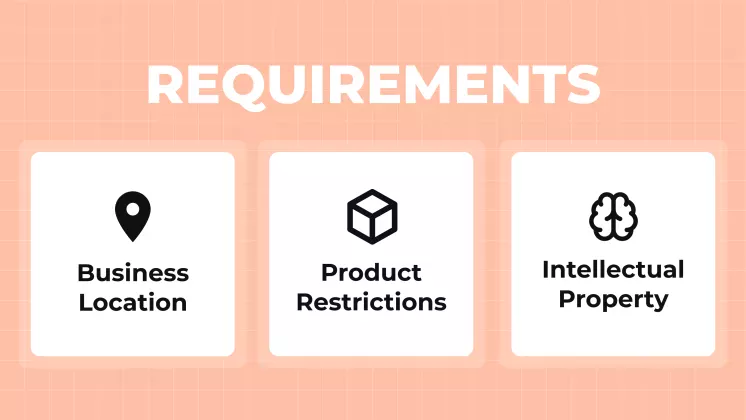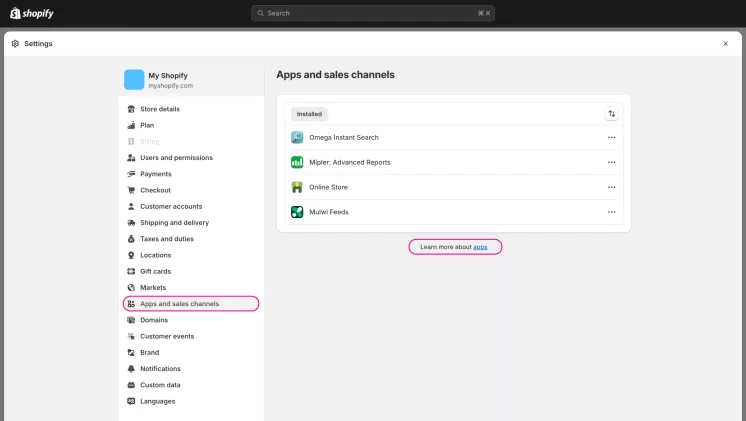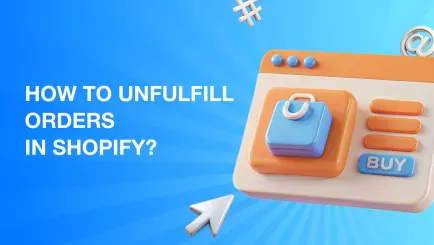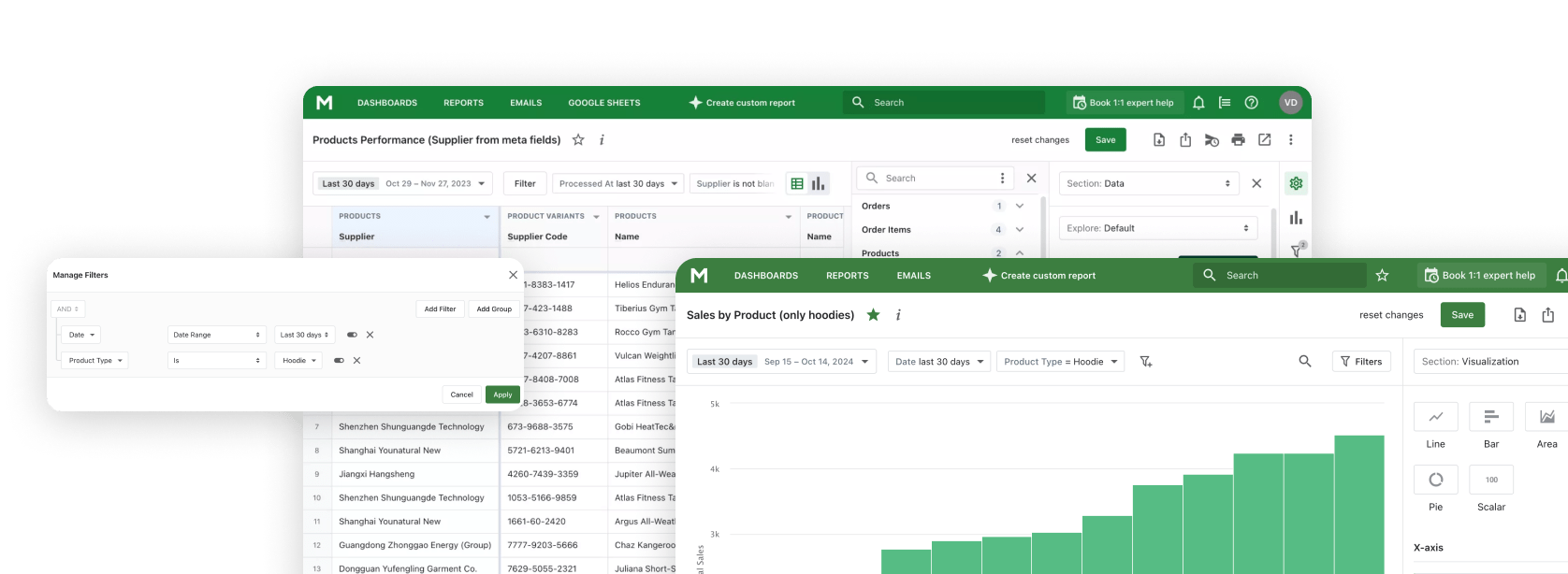The retail business environment has undeniably shifted and businesses now can’t rely on only physical stores. Today's consumers are constantly turning to social media platforms. Users are looking for inspiration, new trends, and are willing to purchase things. This digital shift has brought social commerce to the forefront, with Instagram taking the leading position for visually-driven brands.
For online store owners, connecting Shopify to Instagram presents a tremendous opportunity. By effectively linking the Shopify store with Instagram, retailers can transform their online presence from a captivating display window into a solid product catalog. A strategic union of Instagram and Shopify unlocks numerous benefits, improving the recognition of your store, enhancing sales, and fostering deeper connections with your buyers.
Imagine this: a visitor sees a captivating social media post featuring your latest product. With one click, they can go through product descriptions and effortlessly buy an item from your store. All these actions happen inside the familiar and convenient environment of Instagram. These simplified and streamlined purchases can be achieved by connecting Shopify and Instagram.
This comprehensive guide will explain how to connect Instagram to Shopify and provide strategies to explore the full potential of this powerful combination. We'll walk you through the essential steps of linking Instagram to Shopify, maximizing your presence online, and learning how to use key metrics to measure and adjust your strategy.
At Mipler we empower users to unleash their creativity, embrace the opportunities of data analysis, and transform Instagram and other social media users into loyal clients by providing advanced Shopify Reports and analytics.
Requirements to Connect Shopify Store to Instagram
Before learning how to add Shopify to Instagram, let's ensure your website meets all the basic requirements and ready for this fruitfulintegration.
Instagram Shopping Policies
There are specific guidelines for businesses that plan to link Instagram to Shopify store and promote goods through their platform. It's crucial to familiarize yourself with these policies before proceeding. Key points to consider include:

Business Location: Shopify and Instagram Shopping integration is available to businesses only in selected countries. Ensure your store works in a region that is supported by this feature.
Product Restrictions: Certain goods are prohibited to sell on Instagram with Shopify. So, if your catalog contains alcohol, tobacco, weapons, and adult content, you can’t promote it there. Check Instagram's list of restricted items to see if your Shopify products comply.
Intellectual Property: You must own the intellectual property rights to the items you sell or have authorization from the rights holder.
How to Set Up Shopify on Instagram
Now that you've confirmed your store meets the requirements, let's prepare your base for seamless Shopify to Instagram integration:
Create a Shopify Store
If you don’t have one yet, you need to register a Shopify store to upload your catalog and promote it. Shopify has a free trial, so you can get familiar with features and functionality before committing.
Switch to an Instagram Business Profile
Regular profiles lack the functionalities needed for direct sales on Instagram. To use options like product tagging and adding Instagram to your Shopify store you will have to establish or change to an Instagram Business Profile.
By ensuring your Shopify store complies with regulations and turning to a Business Profile, you'll be ready to use all the benefits of linking Instagram and Shopify.
Explore related reports
How to connect Instagram to Shopify: Essential steps
After you've laid the groundwork, you can link your Shopify store and Instagram account, and offer your visitors a streamlined purchase journey. The steps you need to take are simple and straightforward:
Connect Shopify and Instagram Accounts
While Instagram and Shopify seem like a direct connection, Facebook Business Manager serves as a central dashboard for operating this integration. Here is what you need to do:
- Open a Shopify admin page and find "Sales Channels" in the menu on the left. Follow the link and explore a list of sales channels.
- Look for the link titled "Facebook and Instagram" or "Facebook Sales Channel" (depending on your Shopify version). Click the "Add" button to begin the connection process.
- A new window will appear, prompting you to connect your Facebook account. You will need to log in to your profile at this stage.
- You'll be redirected to Facebook Business Manager. On this platform, you can manage all of the Facebook assets, such as pages, ad accounts, and now, your Instagram page. Don't be discouraged if this seems like an additional step – it simplifies the connection in the future.
- Facebook Business Manager will request permission to get your Shopify store data. Carefully read the permissions and grant access if you're comfortable proceeding.

Integrate Shopify Products to Instagram
You can start developing your goods catalog on Instagram as soon as you have connected your accounts. Follow these simple steps:
- Navigate back to Facebook Business Manager, and find the "Commerce Manager" section. This is where you'll oversee your items' catalogs and shopping experiences.
- In Commerce Manager, locate the "Product Catalogs" section. You'll likely see your previously created catalog connected to your Facebook page. If not, you can establish a new one to present your Shopify goods.
- Look for the "Add Products" button in your catalog. Here, you'll find the integration magic! Select "Add Products from a Platform" and click the "Shopify" option from the list.
- You'll be prompted to grant access to Shopify to provide your data with the Facebook Business Manager to connect accounts.
Alternative Methods for Uploading Product Information and Connect Shopify to Instagram:
While Shopify and Instagram integration is the fastest method, there are alternative options to upload product information if needed:
Manual Upload
Facebook Business Manager lets you manually add items. It might be a time-consuming process for big catalogs but may be just fine for a handful of initial goods.
Data Feed Upload
For advanced users, Facebook supports uploading product information through a data feed file. This requires creating a specific file format with your catalog details.
Account Review and Activation
Once you've connected your Shopify and Instagram accounts and uploaded your goods offerings, Instagram will double-check if you pass the basic requirements for Instagram Shopping. Here's what the process looks like:
Review Process
Instagram typically reviews accounts within 48 hours, but it can sometimes take longer. During this period, patiently wait for their decision. You'll receive a notification via email or within Facebook Business Manager once the review of adding Shopify to Instagram is finished.
Approval of Linking Instagram and Shopify Accounts
If your store is approved for Instagram Shopping, congratulations! You're almost set to begin selling your goods and providing a compelling buyer journey for your clients.
Activating Instagram Shopping Features
Head back to Facebook Business Manager and open Commerce Manager to access the catalog associated with your Shopify store. You should now see a button to "Activate" Instagram Shopping. Click the "Activate" link and follow any additional instructions provided.
If you follow these detailed steps, you'll have successfully linked your Shopify store and Instagram account.

Maximizing Shopify and Instagram Integration
Congratulations! You've connected your Shopify store and Instagram account, laying the foundation for a new sales channel. Now let’s learn how to develop and popularize your store.
Product Tagging
The tagging feature lets you connect Instagram with your Shopify products. Here's how to unlock this magic:
Tagging in Organic Posts
Write an engaging post showing items from your brand catalog. During the posting process, select the "Tag Products" link. A search bar will appear, where you can search for positions in your catalog. Pick the goods to add to your post. After tagging, a product tag will appear on your visuals, indicating to viewers that this product can be purchased directly from Instagram.
Tagging in Stories
The tags work in Instagram Stories too. While creating a Story, add a product visual. Click on the sticker icon and select the "Product" sticker. Search and pick the item from your store’s catalog.
Best Practices for Effective Product Tagging
- Accuracy is Key: Ensure you're tagging the same product as on the picture to avoid confusing your followers.
- Strategic Placement: Assign your tags thoughtfully. Don't obscure crucial parts of your image, but keep them noticeable to viewers.
- Tag Multiple Products: You can show multiple catalog items in a single post or story. Use the feature to tag several relevant products, giving viewers more options to explore.
- Show Assortment: Don't just tag the same items repeatedly. Present various collections to keep up with your visitors’ interests.
Collections of Shopify Products on Instagram
Think of your Instagram profile as another storefront to present your catalog items. To streamline the customer journey, you can establish a shoppable feed and product collections:
- Shoppable Feed: Your account automatically becomes shoppable after linking your Shopify store to Instagram. Any posts with product tags on them will be added to your feed. Hence, visitors can view your catalog and buy items from it with no need to leave Instagram.
- Product Collections for Organization: Product collections can be organized in a Shopify store. You can filter your products according to various themes, styles, or any other criteria and then link these product groups to a dedicated "Shop" section on your Insta account. This way you can establish a well-organized purchasing journey for the followers, so they can easily find what they're looking for.
Content Marketing for Shopify Store on Instagram
Engaging Instagram feed is a crucial point for a powerful Instagram presence. Follow this advice to generate compelling content to skyrocket your conversions
- Quality: Invest in compelling visuals that present your goods in their best light. Consider employing a photographer or improving your camera skills to capture stunning visuals.
- Storytelling through posts and Reels: Go beyond static product shots. Tell stories through your photos. Focus on the lifestyle scenarios related to your collections, show them in action, or write insider stories about your brand. Use Instagram Reels, a short-form video format similar to TikTok, to develop captivating and dynamic feeds.
- Share your client’s stories: Motivate your users to film real-life content while they use your products. Reposting these stories from your users helps to establish trust and create a bond, showcasing how real people use and love your collections.
Promotions and Ads on Instagram for Shopify Stores
The high organic reach on Instagram is hard to achieve. Here's how to leverage paid advertising to grow your shoppable presence:
- Targeted Instagram Ad Campaigns with Shopify: Shopify seamlessly connects with Instagram Ads, so you can create targeted campaigns that reach your ideal clients. Define your target demographics, interests, and behaviors to show your ads to the most relevant viewers. Highlight your products within your ad creatives, enticing viewers to click and view your catalog.
- Promoting Instagram Content through Facebook Ads: Don't forget the features of Facebook Ads! You can use Facebook's vast targeting capabilities to promote your content to a large amount of potential customers. This is a great strategy to reach people who may not be following your Instagram account yet.
By implementing these strategies, you'll evolve your Instagram profile from a simple showcase into a powerful sales channel.
Analytics and Tracking of Shopify Store on Instagram
By understanding and analyzing performance and its crucial KPIs, you can continuously refine your approach and maximize the impact of your online presence. Here's a breakdown of essential analytics and how to use them:
Understanding Key Metrics of Shopify linked to Instagram
Both Shopify and Instagram offer valuable analytics tools. Track and analyze these key metrics:
Shopify Analytics
- Impressions: How many times your content appears on someone's screen, regardless of whether they interact with them.
- Clicks: How many times someone clicks on an item tag or link on your Instagram post, redirecting the user to your website.
- Add to Carts: How many times an item tagged in an Instagram post is placed in a customer's shopping cart in your Shopify store.
- Orders: The total number of sales generated from clicks originating on your Instagram profile.
Instagram Insights
- Impressions: Similar to Shopify, this metric tracks how many times your Instagram posts appear on users' feeds.
- Reach: The amount of unique accounts that saw your post.
- Engagement: Tracks interactions like likes, comments, and shares of your posts. This indicates your audience’s interest in your content.
- Product Link Clicks: How often viewers click on a tag within your post.
Interpreting the Data to Improve Strategies for Selling Shopify Products on Instagram
Don't just collect data – make it work for you! Here's how to analyze Instagram metrics and translate them into actionable insights:
Identify High-Performing Shopify Products on Instagram
Look at which items consistently generate clicks, add-to-carts, and sales. Promote these winning products more frequently and consider featuring them in dedicated content.
Analyze Content Engagement
See which content formats (photos, videos, Reels) resonate best with your followers based on reach and engagement metrics. Prioritize content creation according to the styles that drive more engagement.
Track Conversion Rates of your Shopify Store on Instagram
Divide your total Instagram orders by link clicks to calculate your conversion rate. A low conversion rate might indicate issues with your item descriptions or pricing. Conversely, a good conversion rate suggests a seamless customer journey from social media to purchase.
Optimizing Your Approach to Shopify Integration with Instagram
Data empowers you to experiment and rethink your promotion tactics. Make sure to apply the following tips to update your Instagram strategy:
Test Different Content Styles
Run A/B tests to compare how well various types of content perform. Experiment and measure the audience’s reaction to photos, videos, static posts, and Reels to discover what resonates best.
Experiment with Product Tag Placement
Test placing product tags in different areas of the visual content. See if strategic placement influences click-through rates.
Track Performance of Paid Promotions
Monitor the results of your Instagram ad campaigns. Analyze which ad creatives and targeting strategies bring the most clicks and conversions.
By consistently analyzing your performance and implementing these optimization techniques, you will quickly see the results of connecting your Shopify store to Instagram. Remember, data is an important tool, but it's your creativity and strategic thinking that will truly unlock its potential. So, experiment, analyze, and refine to see your sales peaking.
Conclusion
The environment of developing online retail stores has undeniably shifted, embracing the role of social media in our lives. By strategically linking your Shopify store with Instagram, you've unlocked endless possibilities to improve your company’s presence and skyrocket online sales. In this article, we explained the basics and provided strategies on how to set up Instagram Shopping with Shopify.
Remember, successful sales on social media are a marathon, not a sprint. Don’t be afraid to experiment, precisely assess your data, and adjust your approach to meet your target audience's needs. You'll turn your Instagram and Shopify integration into an additional shopping storefront by publishing captivating content, strategically tagging products, and analyzing promotions and analytics.
At Mipler we value the importance of advanced reports and analytics and empower users to unleash their creativity, embrace the opportunities of data analysis, and transform Instagram and other social media users into loyal, brand-loving customers. Welcome to the exciting world of social commerce, where Shopify and Instagram join forces to empower you to turn browsers into buyers!




